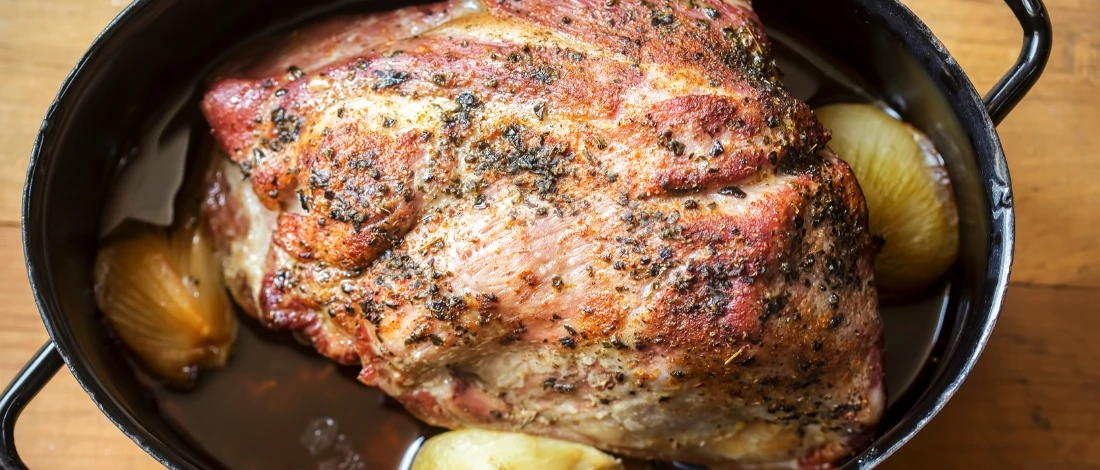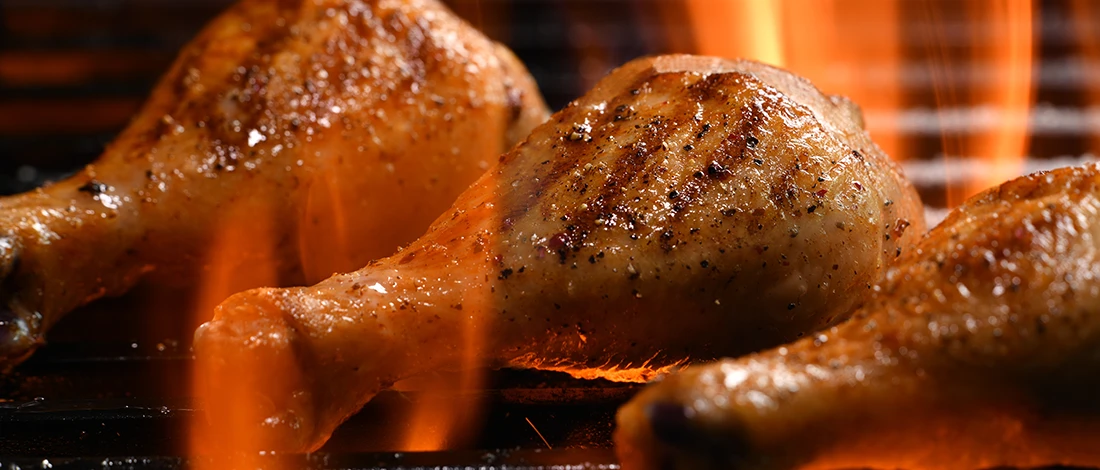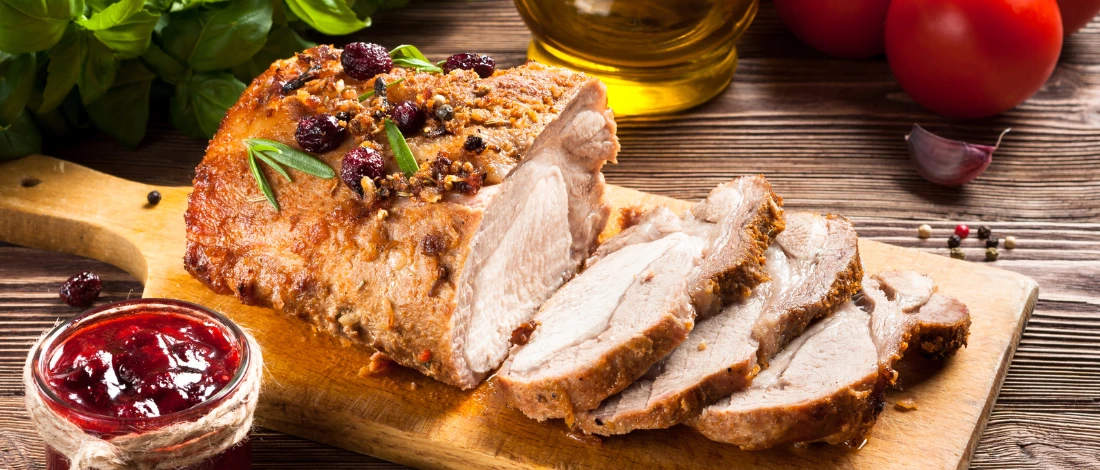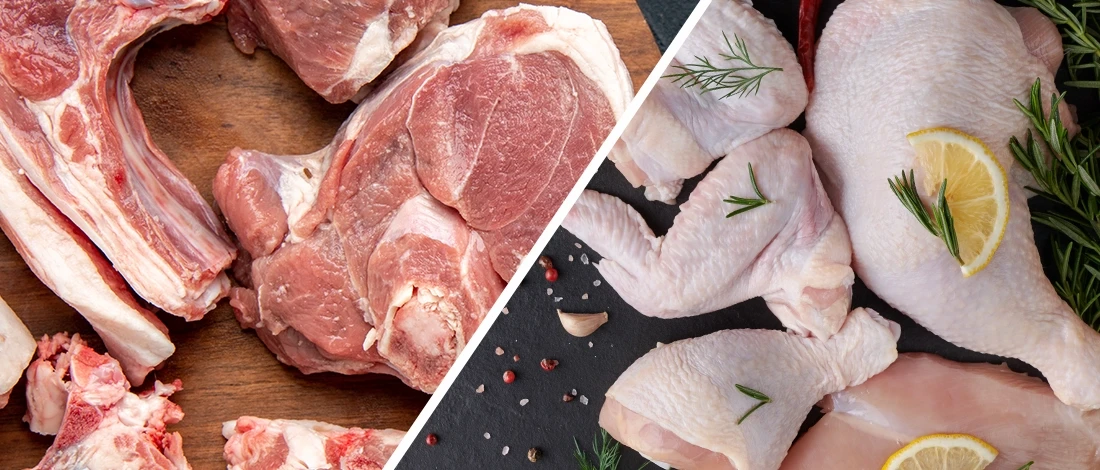If you're looking for a tasty way to add protein and flavor to your meal, you need to look no further than pork.
Two of the most sought-after cuts of pork are loin and tenderloin, but there's much more to know about each cut than just the similarity in the name.
As a nutritionist and an expert in meat and a seven-year carnivore diet devotee, I wanted to break down the differences between these meats and provide an in-depth comparison of pork loin and pork tenderloin.
You can also check out my review of ButcherBox I did a while back and see why I'm so fond of this company.
Quick Summary
- Though named similarly, pork loin and pork tenderloin are two different cuts of meat.
- Pork loin is larger, thicker, and has a higher fat content than pork tenderloin.
- Pork tenderloin has a more delicate flavor and tender texture than pork loin.
5 Differences Between Pork Loin and Pork Tenderloin
Let’s take a look at what sets pork loin and tenderloin apart.
1. Cut of Meat

Pork loins are larger, thicker cuts that come from the upper back of the pig and weigh between four and five pounds. Pork loin usually has a thin layer of back fat known as the fat cap running along the top.
This meat is also known as pork loin rib half, pork center loin roast, pork loin chops, and pork center rib roast.
This meat can be cut into pork chops, pork roast, or medallions. Pork loin is a versatile cut that is ideal for slow roasting, grilling, or pan-frying.
Conversely, pork tenderloins are small, thin, boneless cuts of lean meat that come from the delicate muscle between the pig's backbone and ribcage and weigh about one pound.
Also called pork filet or pork tender, this muscle does not get much use, and is an exceptionally lean and tender cut of meat.
Also Read: Pork Cuts
2. Nutrition
Pork loin and pork tenderloin have different nutritional values due to the differences in muscle structure and fat content.
Pork loin has a higher fat content, contributing to its tenderness and flavor. It is also a good source of protein, iron, and vitamins B6 and B12 [1].
A 100-gram serving of pork loin has the following nutrition facts:
- Energy: 192 calories
- Total Fat: 8.82 grams
- Saturated Fat: 2.84 grams
- Protein: 26.4 grams
- Carbohydrates: 0 grams
- Cholesterol: 80 mg
Pork tenderloin is a very lean cut with very little fat and is, therefore, lower in calories. It also has a good amount of protein and iron.
Since it has very little marbling and significantly lower fat content, it can be less flavorful and drier than pork loin [2].
100 grams of pork tenderloin has the following nutrition, according to the U.S. Department of Agriculture (USDA):
- Energy: 147 calories
- Total Fat: 3.96 grams
- Saturated Fat: 1.36 grams
- Protein: 26 grams
- Carbohydrates: 0 grams
- Cholesterol: 73 mg
3. Taste and Texture
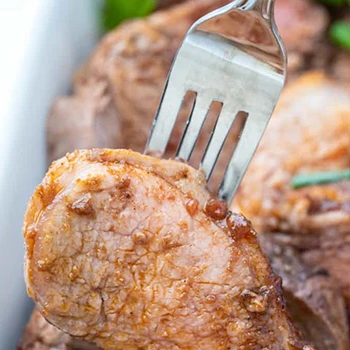
Pork loin muscle has a mild flavor and is a tender meat with a juicy texture. This makes it a popular cut for slow cooker dishes like pork loin roast.
The fat cap content contributes to the pork loin taste and helps keep the boneless roast moist during cooking.
Pork tenderloin has a more delicate taste and texture. To maintain its softness, tenderloin is best cooked rapidly using high-heat methods.
Also Read: Pork Shoulder vs Pork Loin: Differences
4. Preparation
You can prepare pork loin and pork tenderloin differently depending on your preferences.
Pork loin is a versatile cut that can be slow-roasted, grilled, pan-fried, or braised to achieve a tender and juicy result. It can also be cut into chops, roasts, or medallions.
Pork tenderloin is best made with quick cooking methods like grilling, pan-frying, or roasting.
Also Read: How to Marinate Meat?
5. Price
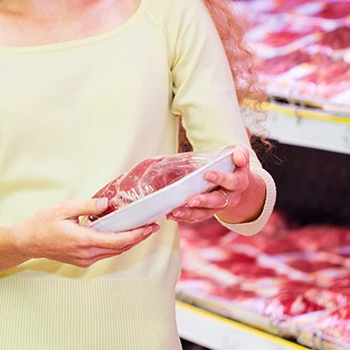
Pork tenderloin is a lean and tender cut of meat that is typically more expensive than pork loin. Its tenderness and lack of fat make it popular in fine dining establishments.
Pork loin, on the other hand, is a budget-friendly option for those looking for a flavorful and versatile cut of pork.
It is less expensive due to its larger size and adaptability, being sold as roasts or chops.
"Pork loin is a great piece of meat to work with. It is cooked quickly, goes with almost any side dish and tastes delicious."
- Jamie Oliver, Chef
Related Article: Beef Ribs vs Pork Ribs
The Best Way to Cook Pork Loin

Pork loin can be cooked in several ways, including grilling, pan-frying, or slow-roasting. However, I am partial to braised pork loin.
Here is a simple recipe for this dish.
Ingredients:
- 2-3 lb pork loin
- Salt and pepper, to taste
- 2 tbsp vegetable oil
- 1 large onion, chopped
- 3 cloves of garlic, minced
- 1 cup chicken or beef broth
- 1 cup red wine
- 1 tbsp tomato paste
- 1 tsp dried thyme
- 1 tsp dried rosemary
- 1 bay leaf
Instructions:
- Season the pork loin well with salt and pepper.
- Heat the vegetable oil over medium-high heat in a large Dutch oven or heavy-bottomed pot. Sear the pork on all sides until it is browned. Remove the loin from the pot and set it aside.
- Add the onion and garlic and cook until the onion is softened.
- Stir in the broth, red wine, tomato paste, thyme, rosemary, and bay leaf. Bring the mixture to a simmer.
- Return the pork loin to the pot and ensure the liquid completely covers it.
- Cover the pot and reduce the heat to low. Simmer the pork loin until it is tender and cooked through about 1-1.5 hours. The internal temperature should reach 145°F on a meat thermometer. Check the pork loin occasionally and add more liquid if necessary.
- Once the pork loin is cooked, remove it from the pot and let it rest for 5-10 minutes.
- Strain the cooking liquid and return it to the pot. Boil the liquid over high heat until it is reduced by half.
- Serve the pork loin sliced and drizzled with the reduced braising juice.
The Best Way to Cook Tenderloin

Here is an easy and delicious roasted pork tenderloin recipe.
Ingredients:
- 2 lb pork tenderloin
- Salt and pepper, to taste
- 2 tbsp olive oil
- 4 cloves of garlic, minced
- 1 tbsp dried thyme
- 1 tbsp dried rosemary
- 1 tsp dried sage
- 1 tsp dried basil
Instructions:
- Preheat the oven to 425°F.
- Mix the salt, pepper, minced garlic, thyme, rosemary, sage, and dried basil in a small bowl.
- Rub the seasoning mixture thoroughly over the pork tenderloin, covering it completely.
- In a large dutch oven, add the olive oil and pork tenderloin, then transfer them to the preheated oven and roast them until the tenderloin reaches an internal temperature of 145°F, about 20-25 minutes.
- Remove and let it rest for 5-10 minutes.
- Slice the pork tenderloin into thick medallions and serve.
Also Read: Perfect Braised Pork Tenderloin With Apples & Onions Recipe
FAQs
Can Pork Loin Be Used for Pulled Pork?
Pork loin can be used for pulled pork. It can be cooked low and slow in the oven, a pressure cooker, or a slow cooker until it becomes a tender cut. Once cooked, use forks to shred the pork into pieces and serve.
Can I Substitute the Pork Loin for Pork Tenderloin?
You cannot substitute pork loin for pork tenderloin. The names may be similar, but they are two different cuts of meat and require different cooking times and methods.
Which Are Healthier, Pork Loin Recipes or Pork Tenderloin Recipes?
Pork tenderloin recipes are generally healthier than pork loin recipes because the meat is leaner and contains fewer calories, fat, and cholesterol.
References:
- https://fdc.nal.usda.gov/fdc-app.html#/food-details/167842/nutrients
- https://fdc.nal.usda.gov/fdc-app.html#/food-details/167905/nutrients


